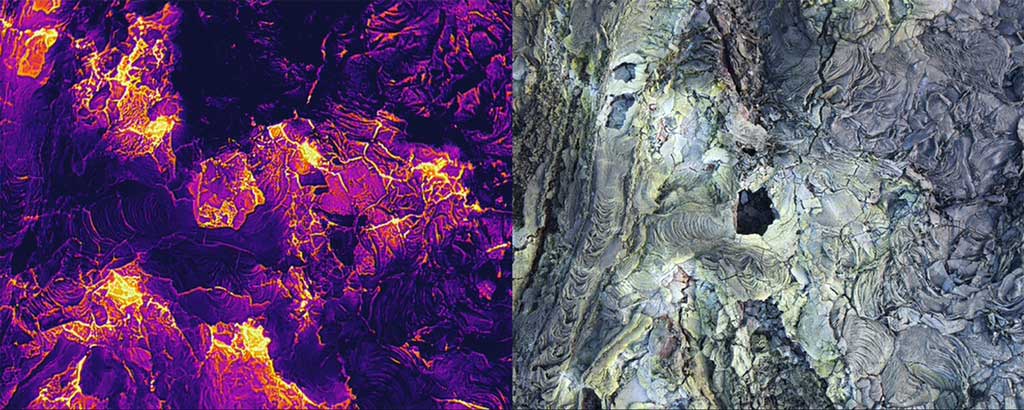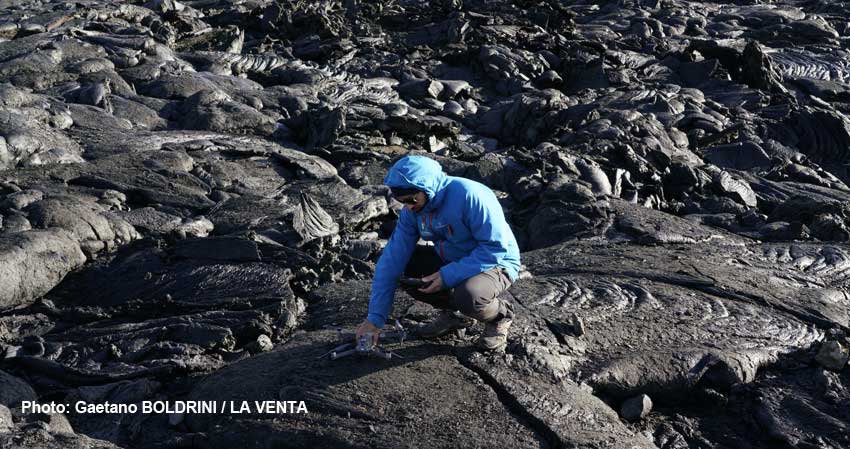After a long pause due to the pandemic, we slowly begin to resume activities in the sign of a new and found normality made of green passes, tampons, masks and sanitizing gels.
Certainly in this long period what we have not done was stop dreaming of new explorations and new adventures, but also to see old friends and companions that we have felt distant for a long time now.
In addition to dreaming, in recent months we have also tried to observe the natural phenomena that are occurring on our planet, one more way to help distract us from the usual talk related to the pandemic and to feed new dreams.

Thus was born this first expedition at the time of the Covid, the objective is Iceland and the study of the volcanic cavities that are forming following the eruption of the Fagradalsfjall volcano which has now been active for over seven months. "Hraun" in Icelandic means "lava", a word that carries with it the power of this very hot matter that is not of our world. We observed its behavior almost daily during this eruption, thanks to the webcams and the numerous surveys and videos made by the island's authorities. In the Fagradalsfjall the activity took place both on the surface, through explosions and eruptions, but above all a few meters deep inside the solidified flows, where the lava flow continues to flow through lava tubes, among the most fascinating volcanic cavities explorable on Earth. It will take a long time before these ducts cool down and become accessible to us humans, but what we have before us is a unique opportunity to learn to study processes that can help us better understand how these cavities are formed and what impact they actually have on volcanic eruptions of this magnitude. For the past ten years, some members of La Venta have been involved in the study of these cavities, especially in the Canary Islands and on Mount Etna, publishing important articles internationally. But now is the time to understand more about their formation processes, what they contain in the cooling phase, and how long it will take for microbiological life to return to colonize those places that were previously impossible for any organism.
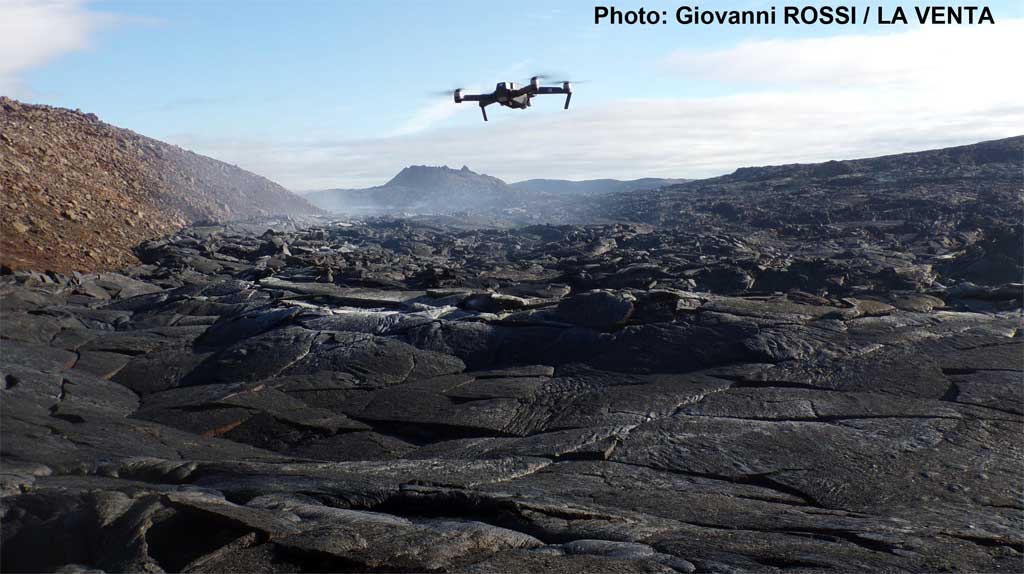
This short expedition represents a first approach to the lava field, to create a sort of "photograph" of the current state, at the end of the eruption. To do this research, we will be equipped with a drone equipped with a thermal chamber that will be used to identify collapses and conduits that develop below the earth's surface. Depending on the weather conditions, one of the main objectives will be to carry out surveys with these tools during the day and at night, for this reason we will install an advanced field in order to be able to take advantage of every useful moment.
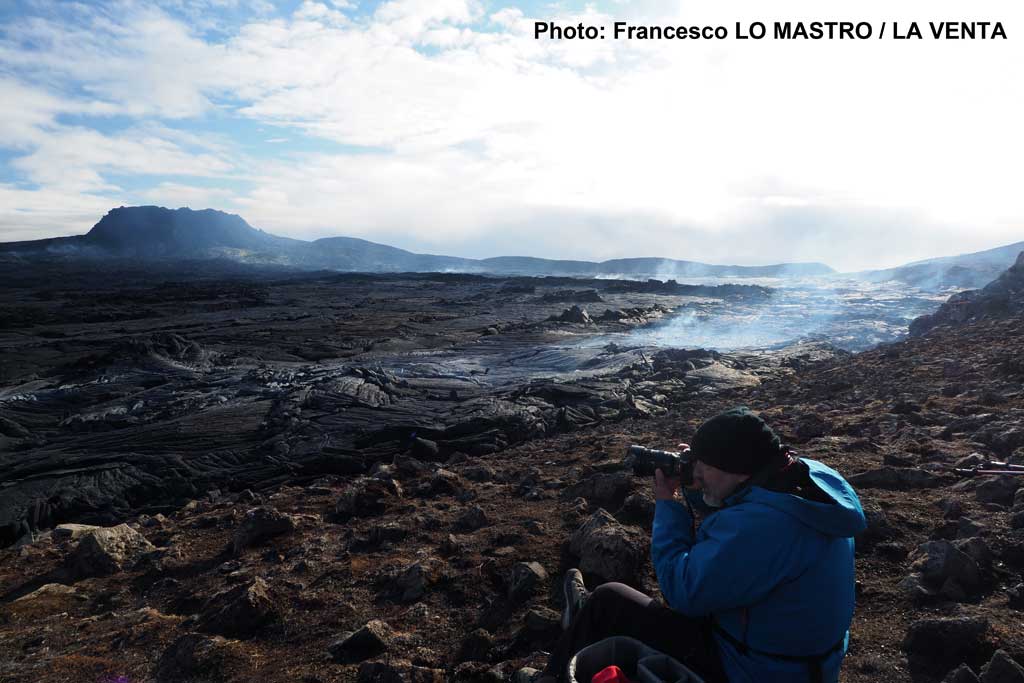
But as with any project that we organize as an association, the first step is to learn about the area to develop collaborations through local contacts, mainly what we will try to do during this first expedition together with the research activities. An intense week awaits us, where we will look out over the still very hot lava of the volcano, we will fly with the drone to capture unpublished images, and we will meet Icelandic researchers and speleologists to start this new adventure.
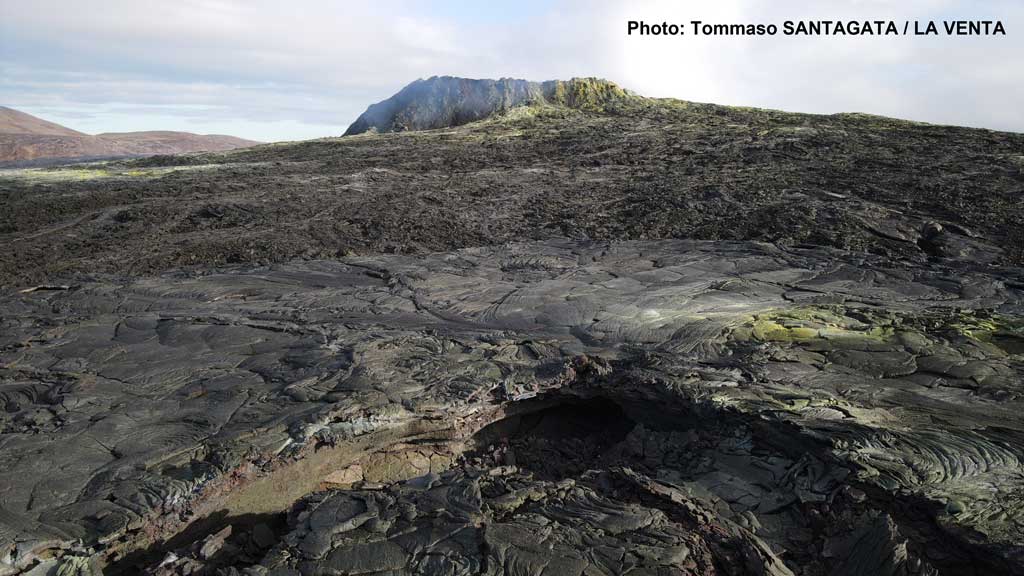
This project is supported by Ferrino, Amphibious, Scurion, Vigea, Miles Beyond, Tiberino, Kibo.it, Studio Atlante, and carried out in collaboration with the National Institute of Astronomy and Physics, University of Bologna and University of Padua, with the patronage of the Italian Speleological Society.
Participants in the expedition are: Daniela Barbieri, Gaetano Boldrini, Antonio De Vivo, Francesco Lo Mastro, Marco Mecchia, Riccardo Pozzobon, Giovanni Rossi, Tommaso Santagata, Francesco Sauro, Giuseppe Savino, Marco Vattano.
